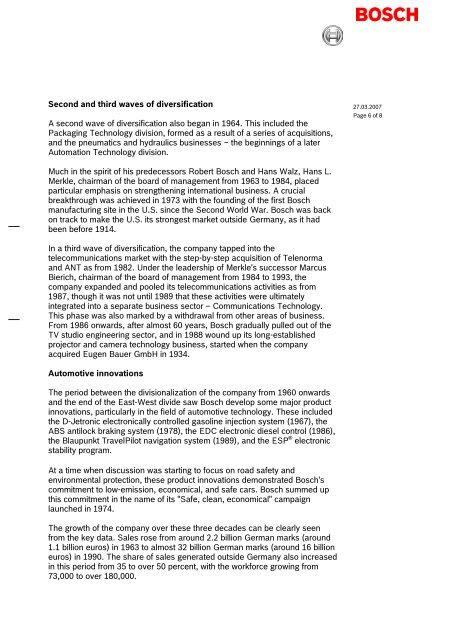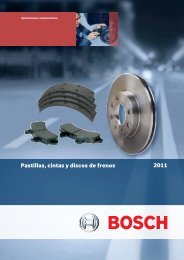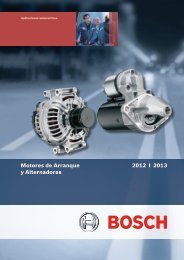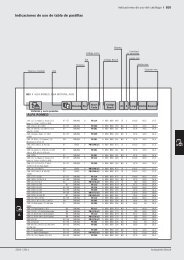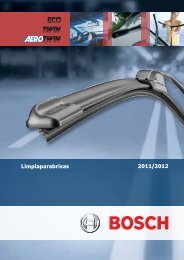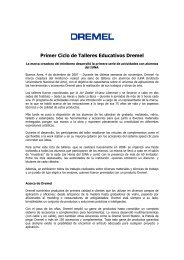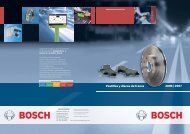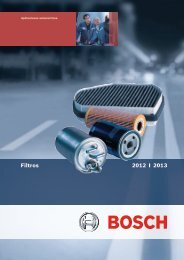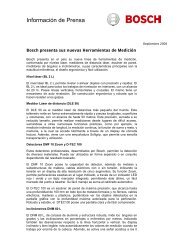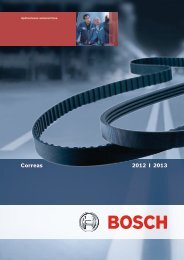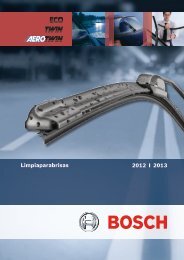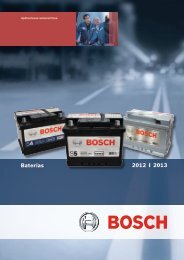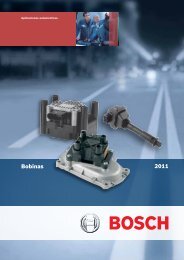Bosch Company History - Bosch Argentina
Bosch Company History - Bosch Argentina
Bosch Company History - Bosch Argentina
Create successful ePaper yourself
Turn your PDF publications into a flip-book with our unique Google optimized e-Paper software.
Second and third waves of diversification<br />
A second wave of diversification also began in 1964. This included the<br />
Packaging Technology division, formed as a result of a series of acquisitions,<br />
and the pneumatics and hydraulics businesses − the beginnings of a later<br />
Automation Technology division.<br />
27.03.2007<br />
Page 6 of 8<br />
Much in the spirit of his predecessors Robert <strong>Bosch</strong> and Hans Walz, Hans L.<br />
Merkle, chairman of the board of management from 1963 to 1984, placed<br />
particular emphasis on strengthening international business. A crucial<br />
breakthrough was achieved in 1973 with the founding of the first <strong>Bosch</strong><br />
manufacturing site in the U.S. since the Second World War. <strong>Bosch</strong> was back<br />
on track to make the U.S. its strongest market outside Germany, as it had<br />
been before 1914.<br />
In a third wave of diversification, the company tapped into the<br />
telecommunications market with the step-by-step acquisition of Telenorma<br />
and ANT as from 1982. Under the leadership of Merkle's successor Marcus<br />
Bierich, chairman of the board of management from 1984 to 1993, the<br />
company expanded and pooled its telecommunications activities as from<br />
1987, though it was not until 1989 that these activities were ultimately<br />
integrated into a separate business sector – Communications Technology.<br />
This phase was also marked by a withdrawal from other areas of business.<br />
From 1986 onwards, after almost 60 years, <strong>Bosch</strong> gradually pulled out of the<br />
TV studio engineering sector, and in 1988 wound up its long-established<br />
projector and camera technology business, started when the company<br />
acquired Eugen Bauer GmbH in 1934.<br />
Automotive innovations<br />
The period between the divisionalization of the company from 1960 onwards<br />
and the end of the East-West divide saw <strong>Bosch</strong> develop some major product<br />
innovations, particularly in the field of automotive technology. These included<br />
the D-Jetronic electronically controlled gasoline injection system (1967), the<br />
ABS antilock braking system (1978), the EDC electronic diesel control (1986),<br />
the Blaupunkt TravelPilot navigation system (1989), and the ESP ® electronic<br />
stability program.<br />
At a time when discussion was starting to focus on road safety and<br />
environmental protection, these product innovations demonstrated <strong>Bosch</strong>'s<br />
commitment to low-emission, economical, and safe cars. <strong>Bosch</strong> summed up<br />
this commitment in the name of its "Safe, clean, economical" campaign<br />
launched in 1974.<br />
The growth of the company over these three decades can be clearly seen<br />
from the key data. Sales rose from around 2.2 billion German marks (around<br />
1.1 billion euros) in 1963 to almost 32 billion German marks (around 16 billion<br />
euros) in 1990. The share of sales generated outside Germany also increased<br />
in this period from 35 to over 50 percent, with the workforce growing from<br />
73,000 to over 180,000.


